Going Green
your guide to local eco-friendly resources
Celebrate Spring: Wilmington VegFest

Earth Day Festivals

Outdoor Programs
Naturopathy
Oak Trees
Frogs & Toads

your guide to local eco-friendly resources
Celebrate Spring: Wilmington VegFest

Earth Day Festivals

Outdoor Programs
Naturopathy
Oak Trees
Frogs & Toads
Spring’s finally here! In this issue we feature a few of the spring events we look forward to every year—Flytrap Frolic, food festivals and, of course, Earth Day celebrations. We hope you’ll take advantage of events you’ve enjoyed in the past...and perhaps try something new. Get out on the water in a kayak. Learn to tell frogs apart by their calls. Go hiking in a place you’ve never seen.
New this issue: we introduce the “Kid’s Korner” page, conceived and written by Shannon Bradburn. It’s designed to appeal to elementary school-aged children from Kindergarten through grade 5, whether they can read it themselves or enjoy having an adult share it with them.
Please remember to watch out for spring babies: baby songbirds and squirrels and other critters will soon be learning to navigate the world, and don’t yet know to stay out of our roads.
— Valerie L. Robertson Editor3
5
6
8
9
9
10
11
12
13
14
15
16
Front Cover:
Eastern bluebird photo by John Sutton.
Sutton is a native Wilmingtonian, having grown up on Wrightsville Beach. He retired from General Electric Nuclear after 42 years. He always had a camera in hand for family pictures, but when digital cameras hit the market in 1998, his interest widened to include pictures of landscapes and nature. He’s particularly fond of photographing birds, showing their character and their quirks. Sutton’s images are available at Wild Bird & Garden and at the Airlie Gardens gift shop.
Cape Fear’s Going Green is a quarterly publication promoting eco-friendly resources and lifestyles in the Lower Cape Fear River Basin.
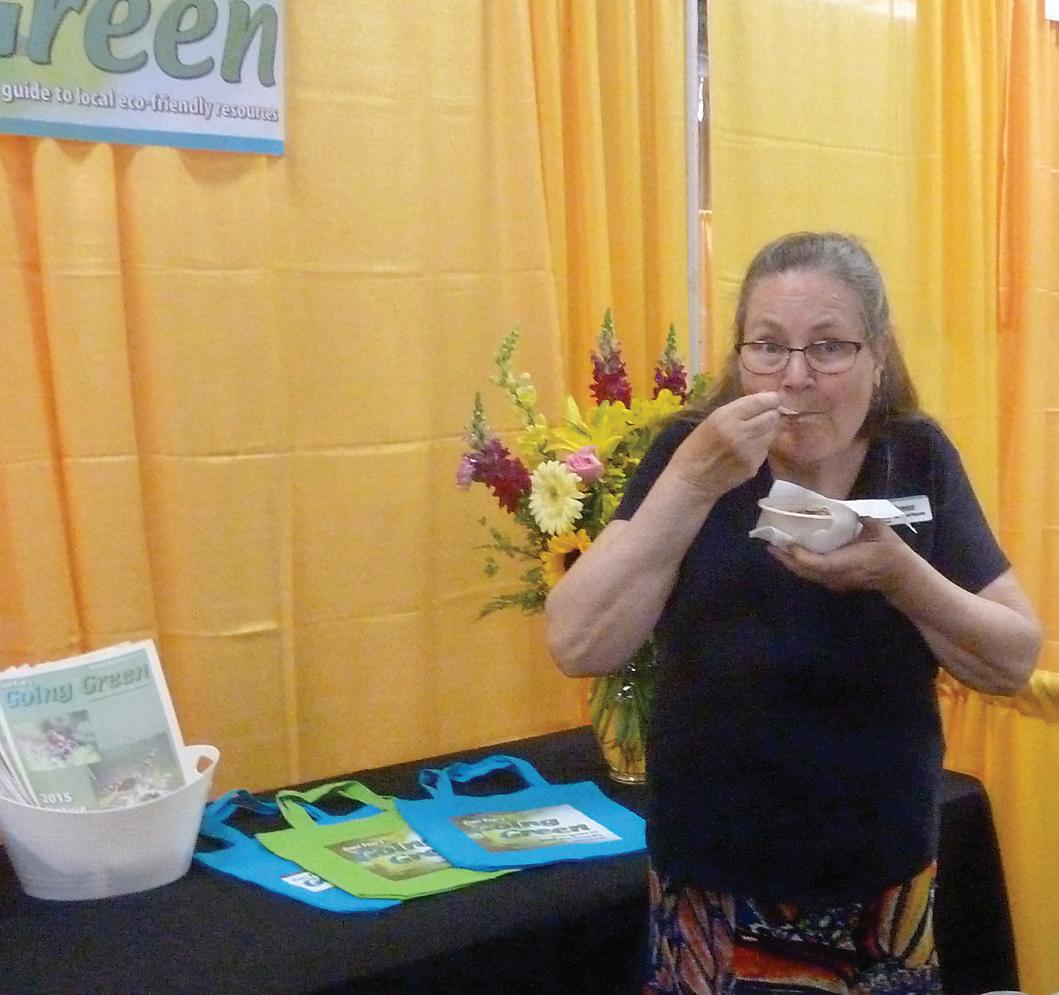
Publisher & Editor in Chief: Valerie Robertson
Sister City: Eugene, Oregon (Voted “Greenest City” 2006 by The Green Guide)
Eugene Contributing Editor: Mary Robertson
Advisors & Editorial Contributors: Lisa Andree, Sam Athey, Carol Bales, Shannon Bradburn, Sue Cag, Andy Gould, Traci Lyn Hobson, Michelle Lawson, Emily Lyons, Christie Perry, John Sutton, and Philip S. Wenz.
Cape Fear’s Going Green
Going Green Publications
P. O. Box 3164 • Wilmington, NC 28406 (910) 547-4390
publisher@goinggreenpublications.com
www.goinggreenpublications.com
How could I resist?
When we start feeling that spring is finally taking over after a long winter, the Eastern bluebirds make their presence known at the feeders and in the back yards. For birders and photographers alike, seeing them in the area is such a thrill. Their beautiful blue coloring stands out any where they land. Like a lot of back yard birds they show up in pairs. It’s easy to tell the males from the females—blue from the beak to the tail is the male coloring. Mother Nature gives the female a bit of protection with a brownish head and neck. The cover shot is from my back yard last spring. This male was quite the gentleman. He sat patiently in the tree while his lady friend had her turn at the feeder.
— John SuttonCape Fear’s Going Green is available by subscription or on our Web site. Print copies are available at more than 140 area eco-friendly businesses and locations, including:
Arboretum/New Hanover County Extension Service, Aunt Kerry’s Pet Stop, Azalea Coin Laundry, Lovey’s Market, Old Books on Front Street, Pomegranate Books, Re-eco Design, Tidal Creek Co-op, UNCW, WHQR, Whole Foods, Shelton Herb Farm, and the YWCA.
Editorial: If you have story ideas or calendar items to suggest, email us at editor@goinggreenpublications.com, or call (910) 547-4390.
Advertising information: Email ads@goinggreenpublications.com.
Cape Fear’s Going Green is distributed free through Brunswick, Columbus, New Hanover, Onslow, and Pender counties. If you have a business and would like to receive multiple copies for the public, please contact us. The views and opinions expressed in articles in this magazine are those of the authors and do not necessarily reflect the official position of this publication.
 by Traci Lyn Hobson
by Traci Lyn Hobson
Thanks for sitting down with us, Dr. Hawkins. Let’s start with the basics. What is a Naturopathic Doctor?
Naturopathic Doctors combine modern medical science with traditional healing wisdom to provide safe and effective care for all ages. We are specialists in natural medicine, focusing on prevention and treatment of acute and chronic disease through optimal diet, healthy lifestyle, and the utilization of natural, nontoxic therapies like herbal medicine and targeted nutritional support. We work to support what Hippocrates called the “Vis Medicatrix Naturae,” or the healing power of nature. The body has a remarkable ability to heal when given the proper tools!
How does naturopathic medicine differ from “regular” medicine? What are the benefits of seeing a Naturopathic Doctor?
Naturopathic Doctors treat the whole person. This requires taking extra time to listen and understand all aspects of someone’s health. One of the foundational principles of Naturopathic Medicine is “Docere,” or doctor as teacher. We educate and empower our clients to achieve their health goals by making sure they understand what is going on with their bodies and by teaching them how to be healthy. We do evaluate standard labs—often the same labs that your MD might order—but we also consider more detailed “functional” type labs that take a closer look at your nutrient status, hormonal balance, etc. Our therapies also differ. While we are trained in standard pharmacology, our focus is on natural therapies. We consider pharmaceutical therapy to be very high in the therapeutic order, which means that we first utilize less invasive natural therapies that will ideally prevent the need for pharmaceuticals. Of course, there are
times when pharmaceuticals are necessary and appropriate. The goal is to utilize the least invasive, safest, most effective therapy for each individual. We work very hard to identify what is really the underlying issue, rather than just treating the symptoms.
All Naturopathic Doctors are trained as general practice family practitioners and many choose to specialize. My passion is family wellness. I love helping parents to raise healthy kids and supporting moms through the ups and downs of modern motherhood. I also help many men and women who are struggling with hormonal imbalances, fatigue, autoimmune issues, and gastrointestinal concerns.
Please tell us about your training as a Naturopathic Doctor.
After completing my pre-med studies at UNC Chapel Hill, I attended Bastyr University, an accredited Naturopathic medical school in Seattle, Washington. I was awarded my Doctorate in Naturopathic Medicine in 2007. All licensable Naturopathic Doctors attend fouryear, graduate-level, in-residence, accredited Naturopathic medical schools. Our medical programs consist of a minimum of 4,100 hours classroom and 1,200 hours clinical training.
The first two years of Naturopathic medical school are very similar to “traditional” medical programs covering all the “basic” sciences: anatomy, physiology, biochemistry, etc. The difference in our training comes in the third and fourth years when, in addition to the standard clinical sciences (cardiology, gastroenterology, etc.), we receive extensive training in clinical nutrition, botanical medicine, homeopathic medicine, physical medicine, and counseling.
You mentioned “licensed and licensable”—are you a licensed doctor?
I have been licensed as a Naturopathic Physician in Washington State since 2007. Licensure laws vary by state, and currently North Carolina does not license Naturopathic Doctors. That’s really a
shame because multiple studies have shown that Naturopathic Doctors improve health outcomes and reduce healthcare costs. I maintain my license in Washington because this allows my clients to verify my credentials and feel comfortable with my standard of care.
How does not being licensed in North Carolina limit your practice?
Well…I see many clients and help to make a big difference in their lives and that’s what matters most. However, my full participation in their healthcare is limited. I’m unable to order some labs and cannot order imaging. I’m also unable to write prescriptions. I find that working together with an open-minded primary care provider can usually overcome these obstacles. Similarly, when I first moved here, referrals to other specialists were difficult, but that is changing as more doctors are understanding the value of working with a Naturopathic Doctor. Licensure of Naturopathic Doctors in NC would make Naturopathic Medicine so much more accessible for so many more people. It would be wonderful for our Naturopathic Doctors to be able to fully utilize their excellent training. That’s why we’re working so hard to achieve licensure this year!
(continued on page 4)
How can people who want increased access to Naturopathic Medicine in North Carolina help get NDs licensed in our state?
I am so glad you asked! We’ve been working on achieving licensure for two decades and it seems we’re getting close. Here are three simple ways you can help us get across the finish line:
• Join our grassroots community. Go to www.ncanp.com/join-our-efforts and sign up for legislative action alerts;
• Follow us on Facebook at www. facebook.com/NCANP where we post legislative alerts;
• Make a donation. Educating lawmakers pushing healthcare legislation takes time and money. Donating is easy at www.ncanp.com/donate. We are also seeking like-minded corporate partners!
About Dr. Hawkins: A native Wilmingtonian, Dr. Amy Hawkins, ND,
is a Naturopathic Doctor practicing in Wilmington, NC. With more than twenty years of experience in natural health, she is an expert in holistic assessments and natural therapies. She currently serves as the President of the North Carolina Association of Naturopathic Physicians (NCANP) and as the Co-Chair of the NCANP Legislative Committee. Learn more about Dr. Hawkins on her website, www.drhawkinsnd.com, and learn more about the NCANP at www.ncanp. com.
About the writer: Traci Lyn Hobson is a freelance writer, a vegan health coach, and a Clarity Breathwork practitioner. She is the Director of State Relations for the American Association of Naturopathic Physicians in Washington, D.C. She’s also a recovering attorney and a native North Carolinian. When she isn’t writing, coaching, or facilitating breathwork sessions, you can find her in the kitchen perfecting a new vegan recipe or walking with her rescue pups, Bailey Mae and Sweet Pea. Learn more on her website, https://tracilynhobson.com/.
Currently, 20 states, the District of Columbia, and the United States territories of Puerto Rico and the United States Virgin Islands have licensing or registration laws for Naturopathic Doctors. In these states, Naturopathic Doctors are required to graduate from accredited four-year residential naturopathic medical programs and pass an extensive postdoctoral board examination in order to receive a license or registration. Licensed and registered Naturopathic Doctors must fulfill state-mandated continuing education requirements annually and have a specific scope of practice as defined by their state’s law. Naturopathic Doctors in North Carolina are actively working toward licensure and legislation is pending in the NC House and Senate. For a list of the states that regulate Naturopathic Doctors and further information, visit the American Association of Naturopathic Physicians’ website.




• Free evaluation of your yard through the “Bird-Friendly Habitat Award Program,” which supports migratory birds through native planting and thoughtful landscaping.
• Free evaluation of your yard through the “Bird-Friendly Habitat Award Program,” which supports migratory birds through native planting and thoughtful landscaping.
• Free evaluation of your yard through the “Bird-Friendly Habitat Award Program,” which supports migratory birds through native planting and thoughtful landscaping.
• Monthly meetings, plus field trips and guided birdwalks, open to members and non-members.
• Monthly meetings, plus field trips and guided birdwalks, open to members and non-members.
• Speakers available for your group
www.capefearaudubon.org
• Speakers available for your group
www.capefearaudubon.org
• Monthly meetings, plus field trips and guided birdwalks, open to members and non-members.
info@capefearaudubon.org
info@capefearaudubon.org
• Speakers available for your group
“It is now within the power of individual gardeners to do something that we all dream of doing: to “make a difference”... to the future of biodiversity, to the native plants and animals of North America and the ecosystems that sustain them.”
“It is now within the power of individual gardeners to do something that we all dream of doing: to “make a difference”... to the future of biodiversity, to the native plants and animals of North America and the ecosystems that sustain them.”
“The future of healthcare begins with nutrition” is the message physicians and other participants will receive at the fifth annual Plant-Based Prevention of Disease national conference (P-POD), to be held May 19-21 in Raleigh. P-POD offers an evidence-based look at how plant-based eating patterns may reduce preventable diseases. Designed to teach physicians about nutrition, members of the public are welcome and are charged a discounted fee. For more information, please see www.preventionofdisease.org.
—Douglas Tallamy
—Douglas Tallamy
“It is now within the power of individual gardeners to do something that we all dream of doing: to “make a difference”... to the future of biodiversity, to the native plants and animals of North America and the ecosystems that sustain them.”
Bringing Nature Home
Bringing Nature Home
—Douglas TallamyBringing Nature Home
On March 27, 2018, the Green Party became North Carolina’s newest official political party, joining Republicans, Democrats, and Libertarians with state recognition. The Green Party is now a ballot-qualified party, so members can run as Greens rather than as write-in candidates. Voters may register as a member of the Green Party. See https://ncgreenparty. nationbuilder.com for more information.
There are several wonderful natural spaces in the Wilmington area. ILoveTrees.net is a photo blog documenting these local treasures. Profiled here are the trees and trails of the Abbey Nature Preserve.
 by Sue Cag
by Sue Cag
I’ve been to the Abbey Foy Moore Nature Preserve many times. I find the familiar trailhead behind the Poplar Grove parking lot. The trail is wide and popular. Dogs run alongside joggers, parents walk with their children, and friends take a stroll after work. Still, there’s enough space here that you can stop and feel the vibe of the forest. You’ll hear the rumbling traffic from route 17 too, but you’ll also hear a variety of birds, squirrels jumping from branch to branch, and the flap of a huge heron’s wings as she takes flight.
The trail is pure leisure. I can look up without staring at my feet because the path is flat and smooth. I see the tall branches of gum trees and laurel oaks that are hidden in the brambles of the forest. I
find numerous mature trees tucked back here among new growth. I count tuliptrees, loblolly pines, and dogwoods.
Soon I enter a long walkway across Mill Pond with small cypress trees creating mirror reflections in the water and little turtles poking their heads up for air. There’s a bench to relax on and enjoy the view. When I pause here I’m treated to great herons flying overhead and numerous other birds tittering and moving along the branches on either side of the pond.
There are a few different trail options as I continue. I turn left. I’m led past flowering dogwoods and large twisting loblolly pines with unusually low branches. Then I come upon a creepy pine forest. This area has obviously been logged as there are numerous thin pine trees all the same height. It appears dark and monotone, gray and dull blue. I take solace in this unnatural forest by appreciating the carolina jasmine I find littering the forest floor. I inhale their sweet scent.
Next I come upon a field. I notice wild flowers growing in the rough ground and along the field’s edges. I find flowering buckeye along the wind break as well as a majestic pine towering into the sky. A
bunny scampers off into the brambles as I pass by.
I follow the wind break until the end and I find a massive gum tree rooted there beside a swamp. The trunk is thicker than any other tree here and it’s partially obscured by vines and shrubs. I watch the sunset from here, the rays beaming through the trees, the leaves glowing gold and verdant hues.
I turn to walk back, stopping to admire the half hollow tuliptree at the corner of the field. Down the trail on my left the land has been clearcut. It’s a terrible eyesore but not an uncommon sight. Our towns, neighborhoods, and businesses are nothing more than clearcuts themselves. Here we may react more strongly when it’s fresh and we can see the raw stumps, the felled magnolias, the huge stacks of trees, the land violently stripped of life. And we know what we’re missing.
The trail back is warm and tunnel-like. Pine needles cushion my feet as I dreamily saunter out of the thin forest, still spotting a few mature trees tucked in the woods. Helpful signs along the trail tell me what kind of tree I’m looking at. A small orange spotted butterfly lands on the path in front of me, gracefully moves his wings up and down, then flies away as I approach. He lands again a little farther down the trail. I stop and crouch down on my knees to admire the color and texture of his forewings and hind wings, but he quickly flies off again, away from my footsteps and into the trees.
Dedicated to Margaret Abbey Foy Moore, the preserve consists of 62 acres protected through conservation agreements between the Foy family and the North Carolina Land Trust. Approximately 2.4 miles of popular nature trails wind through the property. Located at (but not owned or operated by) Poplar Grove Plantation (10200 US-17, Wilmington, NC), it is open and free to the public during daylight hours. Dogs must be leashed!
This is the fourth of a series of Cape Fear area native plant articles to appear in Going Green. The articles will include interesting stories about each of 10 common native plants that would enhance any coastal North Carolina garden or landscape. Oak trees are the subject of this third article.
I love oak trees. I have hugged them, photographed them, grown them, and cherished them. They are so strong; they remind me of the army of trees called Ents that went to war to battle the enemies in the story of Lord of the Rings.1 Here in Wilmington we have beautiful oaks that provide lots of oxygen, acorns, and leaves that help purify our air and nurture our community. Legendary mighty oaks grace Airlie Gardens, Orton Plantation, the Bellamy Mansion, and the Arboretum, among other places where many young and old oaks grow.
When you consider growing an oak tree, it is important to know what conditions it needs to flourish. You should also strive to find an oak variety that is native to this area, one that is not invasive and not too big for your chosen site. (Oaks can

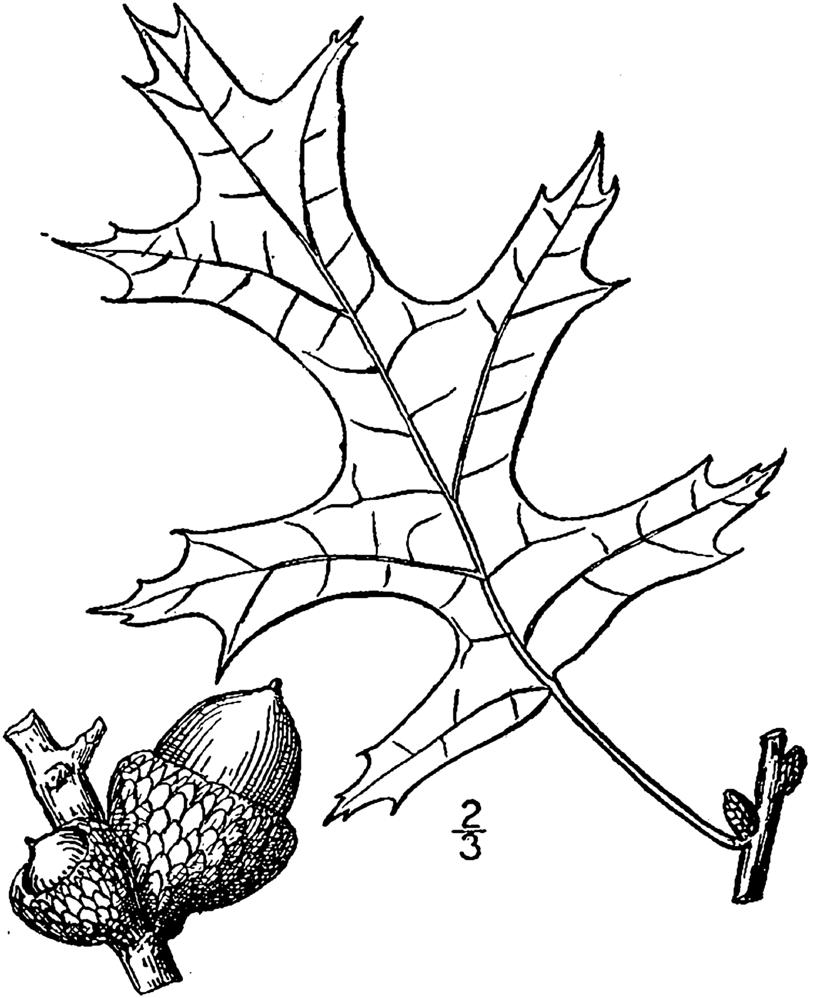
get really big!) Pesky gray squirrels plant most of our oaks unintentionally, trying to stash acorns away in a safe place so that they can dig them up and eat them in the winter. (But they seem to have memory problems and cannot find them. Oh well…) Humans normally plant young oak trees that have already germinated from acorns, hoping to have a decent size tree within a few years. They are slow to reach maturity, though, so patience is needed as they grow.
Botanically, all trees including oaks have a scientific name with three parts; the genus such as Quercus, plus a variety name such as coccinea, and an initial or the last name of the botanist who assigned its scientific name such as Muenchh. Thus, a tree named Quercus coccinea Muenchh is the scientific name for the scarlet oak, one of our native oak varieties, named by the illustrious botanist, Otto II Freiherr von Münchhausen. Within the group of oaks that are native to our area are varieties that have varying environments in which they grow best, and in which oaks will flourish if planted there. When deciding on which kind of oak sapling suits the conditions in which it will be planted, one can consult Roger Tory Peterson’s Field Guide to Eastern Trees,2 or any similar reference. These guidebooks list and illustrate species of trees, along with their native habitat, their specific
growth requirements, a map of where they may be found, and their mature height and form. Then, armed with some good information, one can go in search of a nursery owner who can help to select a perfect tree that matches one’s requirements.
Recently, the Cape Fear’s Going Green Environmental Book Club discussed one of the loveliest little books entitled Oak The Frame of Civilization by William Bryant Logan3, available at Old Books on Front Street in downtown Wilmington. (That’s where the club meets every first Tuesday at
chronicles the history of the relationship between oaks and humans from earliest Viking years to the present day. The tome would be a good one to take with you to read when you visit Airlie Gardens to relax and sit down under the legendary Airlie Oak that probably sprouted way back in the 1540s, about 500 years ago. As many old live oaks do, Airlie Oak hosts a veritable garden of native plants like Spanish moss, Resurrection ferns, little live oak sprouts and such. It is the official largest oak in North Carolina. Back to the book, it contains many juicy legends and stories about oak trees and the people who cultivated, revered, and benefitted from them. One of the most interesting parts of the book is a description of how oak acorns have been used as food for humans and for livestock. (Really?!) Another author, Suellen Ocean, wrote a little cookbook entitled Acorns and Eat ‘em,5 about how to harvest, prepare, and cook acorns. I haven’t tasted them yet, but her recipes look intriguing and might be worth the effort it takes to prepare them. [See page 8 for our original recipes using acorn flour.—Ed.]
(continued on page 7)

Oak Trees – continued

One of the native varieties of oak that grows in New Hanover County, namely the Turkey oak, is trying to take over the long leaf pine forest in and around Halyburton Park. Its leaves cover the ground to a depth of about a foot, allowing the acorns that sink below the mulch to sprout and grow. A long row of live oaks can be seen along the median of the 17th Street extension. They are about 20 years old and doing well. It would be wonderful if all of the boulevards in our city could be lined with these trees. Willow oaks can be found around water drainage ditches, lakes, ponds and sloughs. They are the fastest growing oaks for our area and their wood is beautiful when used to make furniture. Most of the 15 native oak trees in our area are listed in the North Carolina State University website: https://plants. ces.ncsu.edu/plants/category/nativeplants/5/?category=trees.

There are dozens of books about oak trees that provide material for hours of study and discovery about the wonderful world of oaks, and these are listed online through Amazon. One of my favorite children’s books is The Giving Tree by Shel Silverstein.6 It tells the story of the relationship of a little boy and a young tree (probably an oak), and traces their lives and how they intertwine until they are both old, withered and wizened. Like the boy in this story, do take some time to appreciate and observe your favorite oak tree. It will love you back by giving shade, comfort and acorns!
Carol Bales is an avid gardener and seed saver, and grows several kinds of milkweed in her yard.

References:
1. Tolkien, J.R.R. The Fellowship of the Ring. New York: Houghton Mifflin Company, 1994.
2. Peterson, Roger Tory. Field Guide to Eastern Trees. Norwalk, Connecticut, the Easton Press, 1988.
3. Logan, William Bryant. Oak: The Frame of Civilization. New York: W. W. Norton and Company, 2005.
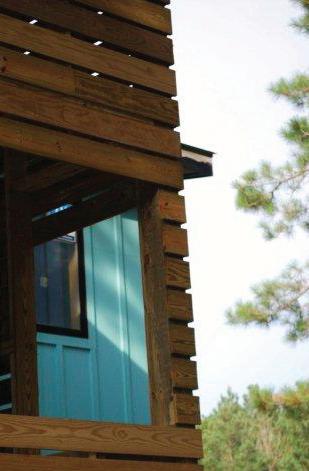

4. See page 11 of this issue for detail on the Cape Fear’s Going Green book club..
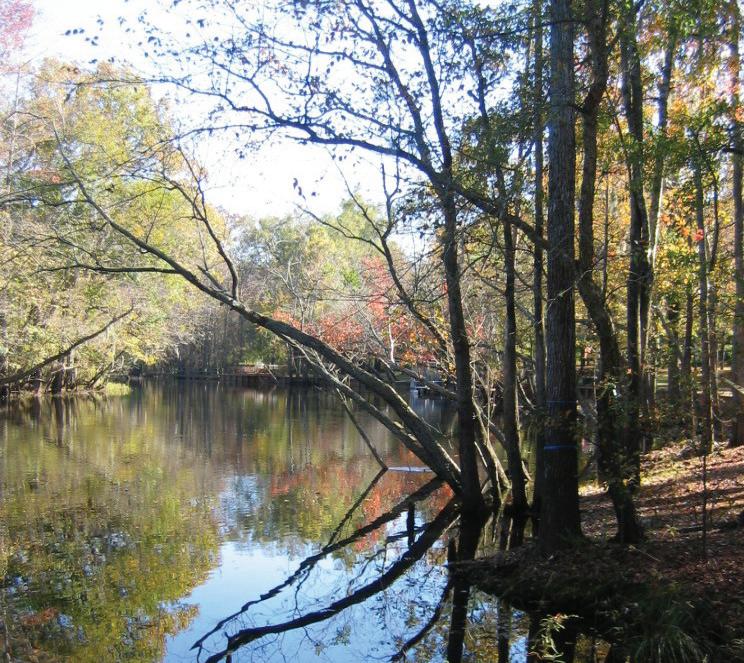
5. Ocean, Suellen. Acorns and Eat ‘Em. Willits, California: Ocean-Hose, 1993.
6. Silverstein, Shel. The Giving Tree. New York: Harper and Row, 1964


If you’d like to try acorn flour in a recipe, you’ll likely want to buy it rather than prepare your own. Both acorn flour and acorn starch are available from some Asian markets; we also bought some online. Although it’s expensive, the nutritional value is very high; William Bryan Logan experimented with recipes for his book, Oak: The Frame of Civiliation, and was surprized at how filling and satisfying the foods are—and how many hours they sustained him. We bought both acorn flour and acorn starch (locally, and online, from Vermont and California) so that chef Emily could experiment in her own kitchen; the resulting recipes appear on page 8.
You can learn how to make your own flour, by watching an online video, or perhaps by reading Suellen Ocean’s book. You must rinse the acorn meat, perhaps several times, to remove the bitter-tasting tannins and make it palatable. We’ve nearly forgotten about this as a ready food source, but when acorns fall my in my neighborhood it now pains me to see so many of them left for our cars to flatten in the road.
—Ed.Welcome to Going Green’s recipe page, where we bring you new ideas for how to enjoy local and seasonal foods. For the purpose of this page, “local” will include North and South Carolina.

• 1 cup water or dairy-free milk
• 1 cup acorn flour
• 2 tsp. garlic powder
• 1 head of cauliflower, chopped into pieces
• 1 cup buffalo or other hot sauce mixed with 1 Tbsp. vegan butter
Preheat the oven to 450°F. Combine the water or dairy-free milk,
acorn flour, and garlic powder in a bowl and stir until well combined. Coat the cauliflower pieces with the flour mixture and place in a shallow baking dish. Bake for 18 minutes. While the cauliflower is baking, place your buffalo sauce or hot sauce and vegan butter in a bowl. Pour the buffalo sauce or hot sauce mixture over the baked cauliflower and continue baking for an additional 5 to 8 minutes. Serve alongside vegan blue cheese dressing and celery.

• Drizzle of cooking oil
• 3 stalks celery, diced
• 2 carrots, diced
• 1 yellow onion, diced
• 2 cloves garlic, minced
• 3 russet potatoes, cubed
• 1/2 bunch kale, washed and cut
• 48 oz. vegetable broth
• 1 ear corn, trimmed

• 32 oz. tomato sauce
• 48 oz. + 1 Tbsp. water
• 1 Tbsp. acorn flour or acorn starch
• Salt and pepper, to taste Heat cooking oil in a large pot on medium high heat.

Once oil is hot and shimmery, add celery, onion, and carrot. Stir vegetables and set heat to medium low heat. Place the lid on the pot.
Turn heat to high, bring to a boil, and then set heat to simmer. Let simmer for 20 minutes.
Mix acorn flour (or starch) with 1 Tbsp. cold water; add to soup to thicken. Add salt and pepper to taste.
Let vegetables sweat for 15 minutes, stirring occasionally.
Add potatoes, kale, corn, vegetable broth, tomato sauce, and 48 oz. water.
[See page 7 for sources of acorn flour.]
Recipes courtesy of Chef Emily Lyons. Emily Lyons is the local vegan chef of Eatery 17, and also provides private plant-based chef services. During the week you can find her either serving up healthy Southwest- and South Pacificinspired cuisine at Eatery 17 or volunteering with Cat Adoption Team. On the weekend, Emily enjoys traveling for marathons and Spartan races.
Restauranteurs take note: More than 1,000 festival-goers descended upon Wilmington’s Coastline Conference Center the afternoon of April 14 for the Port City’s first VegFest.
This vegan festival provides a marketplace for vegan-friendly businesses to promote their offerings, and VegFest organizers say the response from prospective vendors has been overwhelming. Helene Greenberg, the festival’s executive director observed, “I knew there would be interest, but I’m amazed at the number of inquiries we’ve received.” Greenberg has spearheaded similar festivals in the Triangle area.
Even though the benefits of a plantbased diet have been widely touted for years, many can not imagine giving up dietary favorites such as meat, cheese and baked goods. Several VegFest food
vendors helped change a few minds on how easy and delicious it can be to make the switch.
Asheville’s No Evil Foods started as a small vegan butcher shop. Offerings include, plant-based Italian sausage, chorizo, chicken and pulled pork. Founded in 2014, business is booming and No Evil Foods distributes nationwide. Locally, it can be found at The Veggie Wagon, Lovey’s and Whole Foods. The No Evil Foods mission statement says it all: “To use food as a force for good, because real change starts at the center of your plate.”
“But what about cheese?” Those leaning towards giving up animal products often have the hardest time with this one. Luckily, Durham-based Sama Spread tackles those cravings with their savory, rich and tasty nut-based cheese spreads. They pride themselves on using only the best pure and simple ingredients, which
Oak Island Parks & Recreation
Friday, April 20th • 10am–2pm @ Middleton Park
• Oak Island Nature Center
• Oak Island Ocean Education Center
• Oak Island Parks & Recreation Advisory Board
• Oak Island Sea Turtle Protection Program
• Town of Oak Island Police & Fire Departments
• Oak Island Public Works
• Coastal Carolina Forest & Nature Art Show
• Oak Island Earth Saver Relay
• Oak Island Beautification Club
• Oak Island Environmental Advisory Committee
• Brunswick County Animal Protective Services
• Horseplay Farms & Home of Our Heroes
• Fort Fisher State Recreation Area
• Boiling Spring Lakes Garden Club
• Wilmington Children’s Museum
• Challenger Sports & British Soccer
• Bald Head Island Conservancy
• N.C. Aquarium @ Fort Fisher Outreach Program
• Sea Biscuit Wildlife Shelter @ Oak Island
• Brunswick County Beekeepers Association
• Fort Caswell Environmental Steward Program
• Cape Fear’s Going Green
• Beach Preservation Society of Oak Island
• Wonderland Farm
• D Bouton Baldridge & Norm Brown Electric Car & Bike
• North Carolina Coastal Federation
• Ocean View United Methodist Church
• Healthy Living Revolution
even includes, “Blue Ridge Mountain Well Water.” Their products are available locally from Tidal Creek Co-op.
Finally, baked goods are a “sweet spot” for many and the mere thought of doing without is unimaginable. Thankfully, two VegFest vendors, JP’s Pastry from Raleigh and Wilmington’s own Brooklyn Café are meeting the challenge with creative bakery favorites. JP’s is well-known for its dreamy desserts and local vegans have been lining up for Brooklyn Café’s famous beignets and donuts since they opened in August.
In addition to these vendors plus many more, festival-goers enjoyed demos, speakers, food trucks, craft beer and music with a live DJ. Many stayed or returned for the dance party that followed.
For more information on Wilmington VegFest, visit: https://wilmingtonvegfest. com/ or www.facebook.com/ncvegfests/.
It’s time for the annual Flytrap Frolic! This free environmental education event for the whole family features native carnivorous plants that thrive in southeastern North Carolina. Activities include a plant identification scavenger hunt, flytrap-themed crafts, feely-box exploration, and live animal exhibits. Participants will be able to tour the garden and learn about the special wetlands that are home to our local carnivorous plants.
The North Carolina Coastal Land Trust will hold Flytrap Frolic on April 21, from 9 a.m. to 1:00p.m. at the Stanley Rehder Carnivorous Plant Garden, 3800 Canterbury Road in Wilmington. See https://coastallandtrust.org/event/flytrap-frolic/.

This year’s Earth & Surf Fest will be held on Saturday, May 19, at North Topsail Beach. (Organizers have moved it from their traditional July timeslot.) The Earth & Surf Fest is a free environmental awareness event. Its mission is to creat a fun avenue for individuals to make the connection between the health of our environment, our economy, and our people. Beach run registration starts at 7 a.m.; vendors and artisans will be open from 10 –4.
Main events will include a 5K run on the beach, a paddle-fortrash tournament, and beach clean-up. Free beach yoga sessions will be offered at 10 a.m. and at 2 p.m., and there will be live msic throughout the day from three different bands.
For details, visit www.earthandsurffest.com.
Come out for a fun-filled day of live music, good food, and environmental information and activities for all ages! Discover what issues affect our environment, talk with local groups, and learn how you can get involved. Bring the whole family to celebrate Earth Day 2018 from noon until 6 p.m. on Saturday, April 21 at Hugh MacRae Park. It is a FREE event!
Over 60 environmental exhibits will be on display representing various local organizations and businesses. There will be plenty of drinks provided by Waterline Brewing Company, Bill’s Front Porch Pub and Brewery, Panacea Brewing Co., Noni Bacca, and Smart Smoothies. Delicious food will be available from Vittles, Port City Puffs & Stuff, and The Little Chef, while Bubba & Finn’s Tropical Treats will provide desserts. Culligan will provide drinking water, so bring your reusable water bottle or buy an official Earth Day Alliance water bottle at the event! This year’s festival will be a zero-waste event. New Hanover County Environmental Management will collect food scraps from the event (plus any the public wants to bring from home), to compost.
There will be live music all day long. Coastal Collective will start off at noon, followed by Stray Local at 2:00 p.m., and Striking Copper at 4:00 p.m.
New this year: Local shamanic practitioner Roger Lockshier will lead a Guided
Meditation for Earth Healing and Global Peace at 1:45 p.m. Join him for this special guided group meditation as we send light and healing to our Earth and extend peace to all life on our planet. This is an opportunity for our community to come together as one, to share in the sacredness of the Earth with expressions of gratitude. Mr. Lockshier will also have a booth in the exhibitor tent.
Be sure to look for The Argus, the lovingly restored VW bus, from which Old Books on Front Street will be selling environmental books. Thanks to the N.C. Forest Service, an inflatable Smokey Bear will attend. Don’t miss the marine education trailer from the N.C. Division of Marine Fisheries, and the many other exhibitors coming to the park.
As in previous years, the popular Kid’s Zone will provide hands-on activities for kids of all ages. Mark Herbert, as the Rapping Red Oak, will provide music for kids and will lead interested children in the Nature Brigade Parade. The parade will begin at 3:45 p.m. at the kid’s tent and walk a short path around the perimeter of the festival and end up at the main stage. Dress up like your favorite flora or fauna creature and join the parade! Kids can bring their own costumes or make costumes from recycled materials in the Kid’s Zone.
There will be exciting activities for any member of the family, including yoga

Welcome Service LLC is the only welcoming service personally welcoming newcomers and new businesses for 40 years to New Hanover, Brunswick and Pender Counties.
Do you want to be in front of these people and new businesses moving here?
Give Nancy Wilcox a call at 910-793-0950, email at nkwilcox@ec.rr.com, or check out our website at www.welcomeservicellc.com.
on the lawn and outdoor games. Enter to win a brand new Hurricane Kayak, or any of the other prizes in the raffle. Raffle prizes include kayak rentals, yoga sessions, restaurant gift certificates, and many more. There will be an ATM machine on site. (Beer purchases are cash only.)
The event has become so popular that we are continuing to offer free off-site parking. Park your vehicle in the New Hanover County Government Center parking lot at 230 Government Center Drive (park on the west or bowling alley side, near Monk Real Estate School), and take the WAVE trolley from there to the park for free. The trolley will run every 30 minutes beginning at 11:30 a.m. There will also be a shuttle running to the park from DREAMS of Wilmington (901 Fanning Street), following the same schedule.
This year’s festival theme is rECOnnect. The theme was selected to bring awareness of humans’ deep-rooted connection to our planet and to encourage people in our community to get back to those roots.
For more information visit www. wilmingtonearthday.com or https://www.facebook.com/WilmingtonEarthDayAlliance/
FESTIVAL SPONSORS: Bill’s Front Porch Pub and Brewery, Waterline Brewing Company, City of Wilmington Stormwater Services & Heal Our Waterways, Hurricane Kayaks, Great Outdoor Provision Co., WAVE Transit, Clean Energy Events, Clean Air Lawn Care, Land Management Group, Inc., Culligan, Cape Fear’s Going Green, and New Hanover County Parks and Gardens.
Come join us 6–8pm at Old Books on Front Street
249 No. Front Street • Wilmington
January 2
Ecology of a Cracker Childhood
Janisse Ray
February 6
The Big Burn
Timothy Egan
March 6
Blue Mind: The surprising science that shows how being near, in, on, or under water can make you happier, healthier, more connected, and better at what you do.

Wallace J. Nichols
April 3
Beatrix Potter’s Gardening Life

Marta McDowell
May 1
If I Undertood You, Would I Have This Look on My Face?
Alan Alda

June 5 (two books, as we have 5 weeks)
Our Only World: Ten Essays
Wendell Berry, & The Creation
E. O. Wilson
July 3
On the Origin of Species
Charles Darwin
August 7
The Evolution of Beauty
Richard O. Prum
September 4
Other Minds: The Octopus, the Sea, and the Deep Origins of Consciousness

Peter Godfrey-Smith
October 2
Thinking in Systems
Donella H. Meadows
November 13 (2nd Tuesday)
The Once and Future Forest
Leslie Jones Sauer
December 4
Water Wars
Vandana Shiva
Call (910)547-4390 for details
The environmental book discussion group met in December to select the titles the group will discuss throughout 2018. See the listing on this page for the titles of books they look forward to reading and discussing in the coming year.
The book list is also available on the calendar page of Cape Fear’s Going Green’s website (go to the calendar page of www. goinggreenpublications. com and click on any book club meeting in 2018 for a full list of titles) and it also appears in the “Notes” section of the Going Green Facebook page.
The Environmental Book Club is organized by Cape Fear’s Going Green and hosted by Old Books on Front Street. They typically meet the first
Sign up for the Going Green newsletter! We’ll send you updates to let you know when a new issue is published. Let us know by email if you’d also like to be on the email list for Environmental Book Club news. Email Publisher@ GoingGreenPublications.com or sign up directly on our website: GoingGreenPublications.com
January 8, 2019
Braiding Sweetgrass
Robin Wall Kimmerer
February 5, 2019
To be announced...
Tuesday evening of the month inside the bookstore. Social time is at 5:30; discussion begins at 6:00 and runs approximately 90 minutes.
There’s no long-term commitment: you can come when the book being discussed is a title that interests you! “We do hope you’ll read the book before you come, as it enriches the conversation,” says club leader Valerie Robertson. “Our group welcomes new members and one-time visitors.”
Snacks, beer and wine are available for sale inside the bookstore, for you to enjoy during the gathering. Old Books On Front Street offers a discount on new copies of the book club selections. Call the store for details, or ask at the register. 910-762-6657.
Green Wall – continued
Cape Fear River Watch (CFRW) has expanded its educational programming to add several new programs for spring. A new Street Science Saturdays program for K–3rd graders runs from 9:30-10:30 on March 24, April 28 and May 26. Each Saturday has a fun and different theme:
• Eco Explorers - 3/24;
• Reduce, Reuse, Replant - 4/28 ;
• Fun with Fossils - 5/26.
CFRW has also added an intersession Program for 3rd–5th graders, from 9 a.m. to 3 p.m. Participating students will enjoy a trip up the Northeast Cape Fear River on a state-of-the-art catamaran, having fun with fossils, cloud watching and identifying, career discovery and eco-navigating!
space. One of the tenants will be the Wilmington-based software company Untappd, creator of the popular beer app.
to raise and release shad eggs into Neuse River as on ongoing fishery restoration effort.
It’s Mott’s hope that, through the success of this green wall, they will grow in popularity in our area. And that way, more building occupants will enjoy the health and aesthetic benefits of systems like these in the near future.
Although Steve Mott has once again proclaimed himself to be retired, you may be able to reach him through his website, www. mottlandscaping.com.
Through a new partnership with the NC Battleship, River Watch will offer field trips for students, to include a tour of the battleship, a fun outdoor game related to fisheries and a classroom overview. Starting in summer 2018 they will also offer family float kayak trips!
Last but not least Cape Fear River Watch will be participating in the Shad in the classroom program which is an interactive opportunity for school children
Cape Fear River Watch will continue to offer fun and eco-friendly Summer Camps starting in July for children between the ages of about 9 to 13 years old. Students will hunt for venus flytraps, interact with live animals, scour the Southport shore for shells and paddleboat a cypress lake dripping with egrets. This is a day camp, and until April 30 the cost is just $175.00/ week.
Get more information and register for these programs online at CapeFearRiverWatch.org or by calling (910)762-5606. All programs support the Cape Fear River.
Each plant in the wall lives in its original pot, which is placed directly in its tray. The plants will grow towards the light, so maintenance of the wall will include a monthly task of removing each pot by hand, turning it 180 degrees, and putting it back in place.
Fall in love with your home again!
• Affordable interior design services
from the City of Wilmington Tree Commission for Outstanding Function Design at the New Hanover Regional Medical Center Betty Cameron Women’s and Children’s Center (a rooftop garden that can be visited by patients and their families).
• Through-the-trade discounts on décor and furniture, including eco-friendly and hypo-allergenic options for better health
What was it about this project that pulled Mott out of retirement for what was obviously going to involve a lot of time and effort?
Thinking of selling your home?
• Our home staging techniques lead to a quicker sale and a higher purchase price
For one thing, the sheer complexity of the project was enticing. It was new and different and challenging. “I had to learn an awful lot. I mean I’d done this kind of work forever, but still this is a new system I haven’t used... Also just the logistics of it, you know. Building something inside here is like building a ship in a bottle. It was complex enough to be interesting.”
Contact: Judy Cossette

HSR
Certified Professional Home Stager & Redesigner 910.214.4301www.gogreenhomestagingandredesign.com

In October 2017 Greenpeace’s Artic Sunrise made a stop in Wilmington as part of its Atlantic Coast Ship Tour. The ship has made stops in New York, Norfolk and Wilmington on its way to Miami, in an effort to bring communities together under the common theme ‘“Our Communities, Coast and Climate.” They kicked things off in Wilmington Friday night with a special private coalition reception, where members of the community gathered to share stories of the local fight to put people over profits (the GenX crisis to the threat of offshore drilling). Guest speakers included Dr. Kyle Horton, Kemp Burdette, Randy Sturgill, and more. The crew held
Even more important, though, this project was an opportunity for him to prove that such a complicated project could be very successful. And he was concerned that if a green wall were attempted but were not a success, that might be the end of using green wall technology in Wilmington. But he was confident he could make it work. “If it’s successful and it gets some of the notoriety I think it’s going to get, you’ll see a lot of them, maybe not this big. This is a major undertaking in anybody’s book.” He believes that the success of his green wall will encourage others.
Mott plans to put together information on the newly completed green wall, enough so that people will have documentation on how it was created. What he’d really like is to put together a class to teach what he’s learned to people who are eager to learn.
Who will get to visit the wall every day? As floors of the building are finished, the building will be rented out as office
tours of the ship throughout the weekend, attracting over 600 Wilmingtonians. Other events included a “Sweat it Out to Get the Oil Out” dance party, an onboard environmental film screening and a ‘kayak-tivism’ workshop.
For those who missed the festivities but wanted to participate, volunteers of all ages were able to join Greenpeace USA and the Plastic Ocean Project on November 12 for a beach clean-up at Beach Access 29. As the groups cleaned up the beach they determined which brands are the biggest polluters on Wrightsville Beach.
Sam Athey is Director of Chapters for the Plastic Ocean Project.

nomic and medical outcomes — and the field is growing exponentially.

— theplasticide.com
Let’s help our computers learn how to help us save the environment.
How?
By crowdsourcing as citizen scientists.
Before we go any further, some definitions and clarification are in order. First, how can computers “learn” how to help us?
They must be programmed to do so with a set of instructions (algorithms) that allows them to “train themselves” to, in the words of the Wikipedia article on the subject, “progressively improve their performance on a specific task.” Or, put another way, get better and better, on their own, at processing certain kinds of data. This type of computer behavior comes under the general heading of “machine learning.”
A familiar example of machine learning is the way the spam filter in your email application gets progressively better at identifying unwanted messages. Another example is robot locomotion learning — each time a properly programmed robot makes a mistake, such as bumping into a wall, it “learns” to avoid that behavior. There are literally thousands of machine learning tasks — ranging from mastering chess to predicting stock market, eco -
The term “citizen scientist” is generally used to describe nonprofessionals who volunteer their time to do some of the “grunt work” of scientific research, mostly collecting and “sifting through” raw data. They might, for example, count invasive organisms and report their tallies to a scientific database used to analyze where the invaders are, how fast they’re spreading and so on. That information, in turn, can help determine where to focus efforts to control or eradicate the invader.
Increasingly, the “sifting through the data” function can be turned over to computers that can learn how to analyze data sets and use that information to make useful predictions and even recommendations. While this brings up issues concerning the role of the citizen scientists — are they really scientists, or just sophisticated scientific instruments? — it does help us get on with the greater task of understanding and possibly addressing a range of environmental problems. Machines can handle the massive quantities of data crowdsourced — collectively harvested — by hordes of citizen scientists far more efficiently than humans can.
However, the relevant data is best gathered and sorted by a combination of machines and people. A good example of their “cooperating” is the nifty project being conducted by the group Plastic
Tide in England and soon, we may hope, worldwide. Plastic Tide’s environmental challenge is that we know where approximately one percent of the plastic waste entering the oceans goes, but are unable to track the other 99 percent — and we can’t manage the unseen waste. However, a representative sample of that waste winds up on the world’s beaches.
But how can we count, never mind sort as to type, the billions of pieces of plastic found on beaches? Plastic Tide is using small, low-flying drones to photograph sections of England’s beaches, often working just ahead of volunteer cleanup crews. The photos are then uploaded to the Zooniverse.org web site where citizen scientists, working from home, can view them at various resolutions and identify plastic objects. Once an object is identified, the volunteer simply draws a box around it, clicks on a button list to identify it as a bottle cap, fishing line, cigarette filter and so on, then moves on to the next object.
This data, provided by discerning human eyes, is uploaded to Plastic Tide’s computers so they can learn, over time, to identify plastic objects directly from the photographs — without human input. That is, learn to identify, categorize and analyze plastic waste at our ecological house.
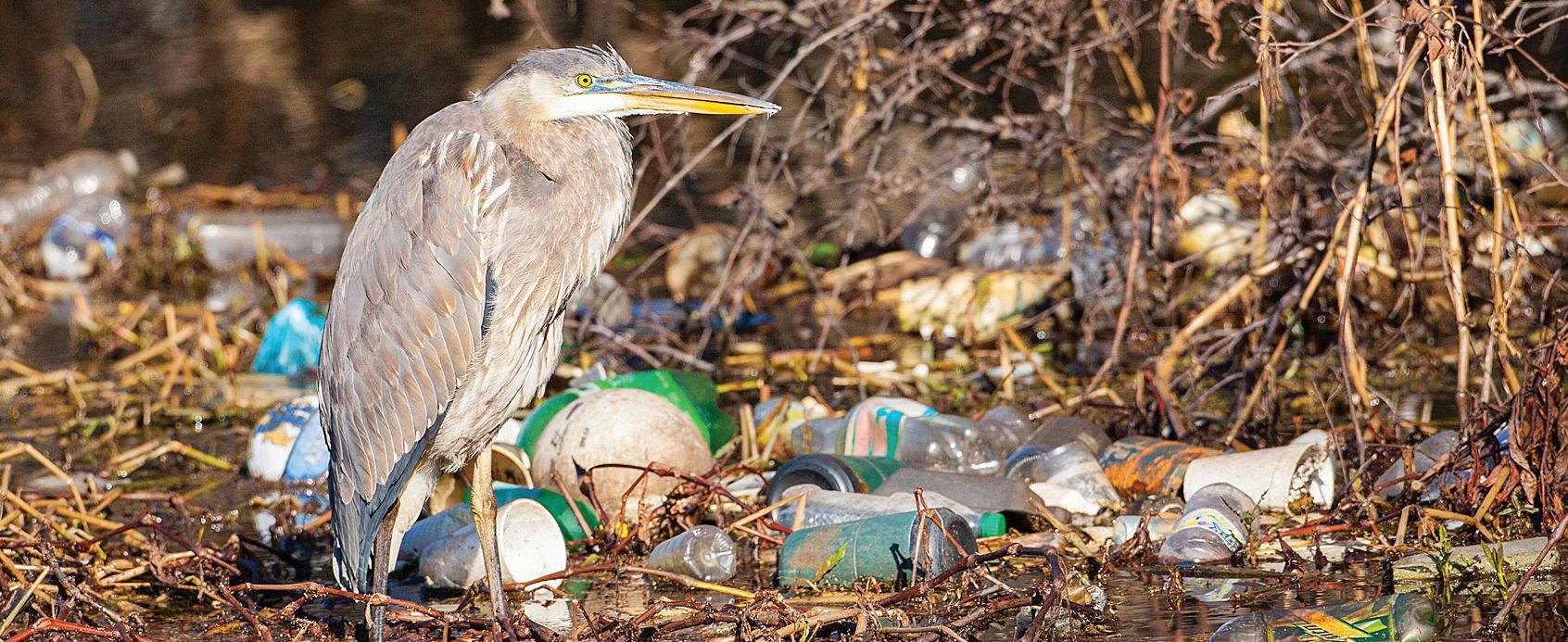
© Philip S. Wenz, 2018
Philip S. (Skip) Wenz is the author of the E-book Your Ecological House, available at all major electronic book distributors.
…whilst we can estimate how much plastic is already in, and is entering, our ocean, we can’t say for certain where it goes.
Become a volunteer for FrogWatch USA! Join Andy Gould from the North Carolina Aquarium at Fort Fisher to learn about amphibians and the conservation issues they face. Also, discover how to use a nationally recognized protocol to help better our understanding of amphibian populations. Learn how to recognize the unique calls of many different local species. This training workshop includes fun activities and hands-on demonstrations. No previous knowledge of amphibians or scientific background is required. NC
Environmental Education Accreditation hours available.
What is FrogWatch USA?
A group of volunteers who monitor local frog populations by listening for frog calls throughout the spring and summer. What is the commitment for Volunteering?
We ask that you conduct at least four 10-minute monitoring sessions between February and August.
What are the benefits of Volunteering?
2018 marks the centennial of the Migratory Bird Treaty Act, the most powerful and important bird-protection law ever passed. In honor of this milestone, we’re joining forces with nature lovers around the world, National Audubon Society, National Geographic, and more to celebrate 2018 as the “Year of the Bird!” Visit the official site at birdyourworld.com to learn more and sign up to make a difference for birds and the planet.
Contact Valerie today to learn more: (910)547-4390 or ads@ goinggreenpublications.com.
Sat., May 22: Painted Bunting Workshop
9:15-10:30 a.m.
Native Plant Sale 2:30–4:30
Wild Bird & Garden Hanover Center 3501 Oleander Drive Wilmington NC 28403
Sat., May 22: Painted Bunting Workshop
9:15-10:30 a.m.
910-343-6001
www.wildbirdgardeninc.com
Native Plant Sale 2:30–4:30
Wild Bird Garden
Wild Bird & Garden Hanover Center 3501 Oleander Drive Wilmington NC 28403
910-343-6001
www.wildbirdgardeninc.com


Wild Bird Garden
Participate in nationwide scientific research. Contribute valuable information for the conservation of amphibians. Enjoy learning more about the world around you and your amphibian neighbors! Youngsters can become very adept at identifying frogs by sound, which makes this a wonderful project to pursue as a family.
To find out more about FrogWatch USA please visit https://www.aza.org/ frogwatch.
The NC Aquarium at Fort Fisher will host its next volunteer training on May 19, 2018, from 9:00 a.m. – 1:00 p.m. These trainings are free of charge. To register, please visit: https://reservations.ncaquariums.com/fortfisher/Info.aspx?EventID=38
For more information, please contact Andy Gould, School Programs Coordinator at the NC Aquarium at Fort Fisher, at andy. gould@ncaquariums.com or call him at (910)772-0560.
The 29th Annual River to Sea Bike Ride will be Saturday, May 5. Meet at 12 No. Front Street in downtown Wilmington. Registration starts at 6 a.m., and the group will depart promptly at 7:00 a.m.
All riders are welcome on this 20mile (round-trip), casual-paced bicycle ride from downtown Wilmington to Wrightsville Beach on Wilmington’s River to Sea Bicycle Route. There is no charge to participate. Helmets are required, and there will be police support along the way.
Refreshments and T-shirts will be sold at Wrightsville Beach Park, and T-shirts will be sold for $10 cash or check on the day of the event. First come, first erved, so preferred T-shirt sizes cannot be guaranteed. Learn more at www.wmpo.org/bikemonth/, where you may also pre-register for the ride.
Duke University, Nicholas School of the Environment, is offering the following as one of its online executive education courses. You can look for more details at http://sites.nicholas.duke.edu/execed/ courses/
Title: Podcasting for Environmental Communications (Online)
Dates: Apr 30 – Jun 8. 2018
Cost: $1,075 (Early Bird $1,000 by Apr 16, 2018)
This online course will get you up and running with your own environmental podcast. Students will focus in detail on
how to plan and implement a podcast on a subject of choice.
URL: http://sites.nicholas.duke.edu/ execed/podcasting-for-environmentalcommunications/
Your employer can also inquire about an in-person training course customized for specific needs in topics such as environmental finance, sustainable business development training courses. For more information on these and other upcoming courses, visit our Upcoming Courses page, or email execed@nicholas.duke.edu for details.

We wouldn’t be here without our advertisers, and you could become one of them!
These are animals that spend part of their life in the water and part of their life on land. The babies are born in the water and then when they grow up into adults they are able to go onto the land. Imagine amphibians spending birth all the way through high school in the water and then when they go to college they go out on land.
Toads, Cats, Salamanders, Bats, Frogs, Lizards, Crocodiles
Mr. Toad from The Wind in the Willows Jeremiah the Bullfrog
Can you think of any others?
Frogs and Toads are not the same animal. Frogs normally have smooth skin while toads normally have bumpy skin. Toads tend to lay their eggs in long strands—like pasta—while frogs lay their eggs in clusters—like blueberries in a bowl.
1) Toads can give you warts if you touch them.
2) Birds eat frogs.
3) Frogs and Toads lay their eggs in the water.
4) If you kiss a frog they’ll turn into a prince or princess.
Amphibians like frogs and toads are not doing well these days. A fungus is really hurting them. What can you do to help?
1) Talk to your teacher, group leader, family and friends about ways you can help fight climate change as a community.
2) Go visit and learn about amphibians at the Aquarium.
3) When you are outside be mindful not to step on any animals, especially amphibians.
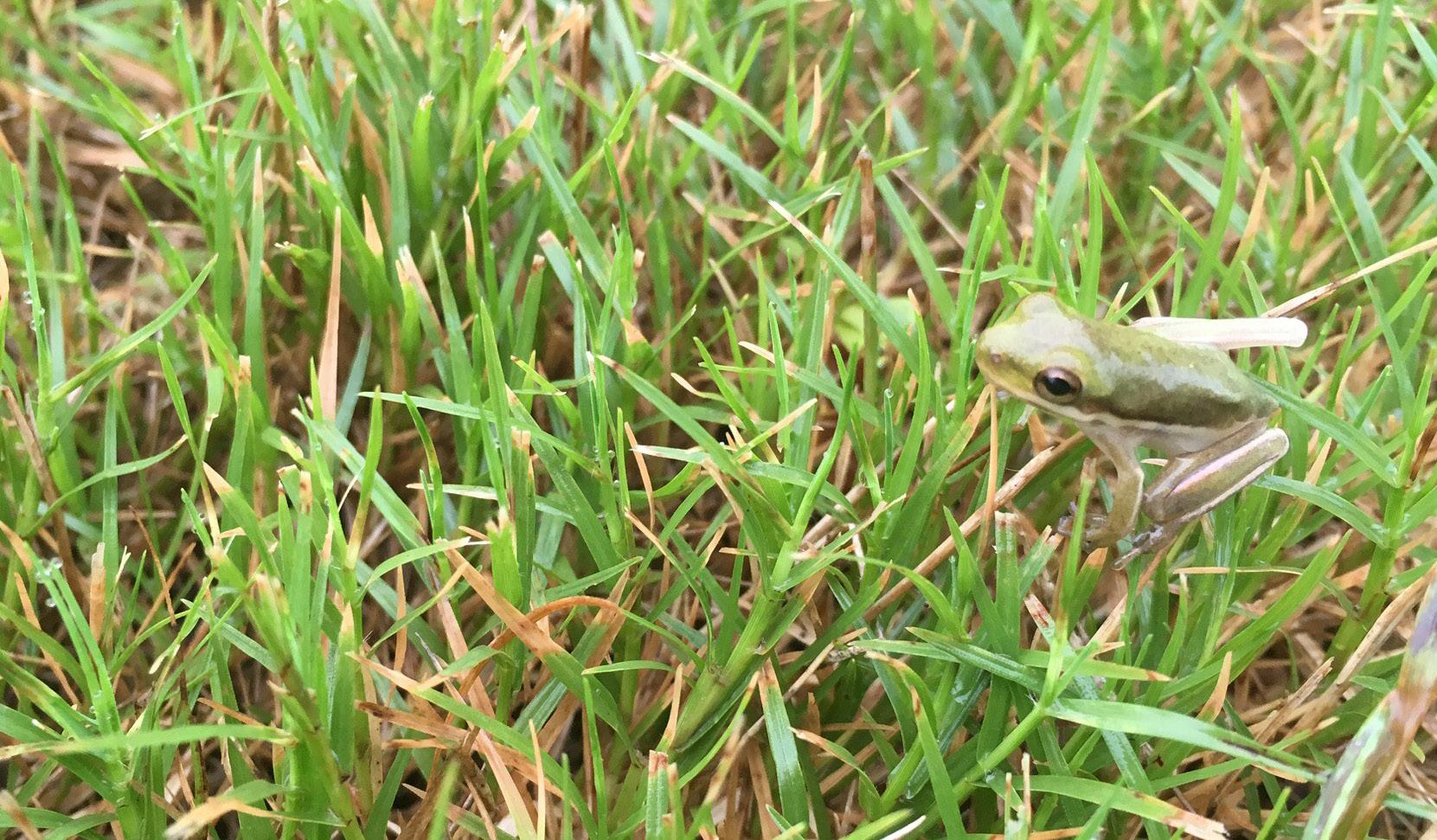
4) When you learn something about amphibians be sure and share what you have learned with the grownups in your life. They might not know something that you do!
4) False– But you might get sick with Salmonella.
3) True– They are amphibians.
2) True– Some large birds, such as herons and cranes, sometimes eat frogs.
1) False– This is a myth that started because toads look as if they have warts.
Southern Toad, or
Toads, Salamanders, and Frogs are amphibians.
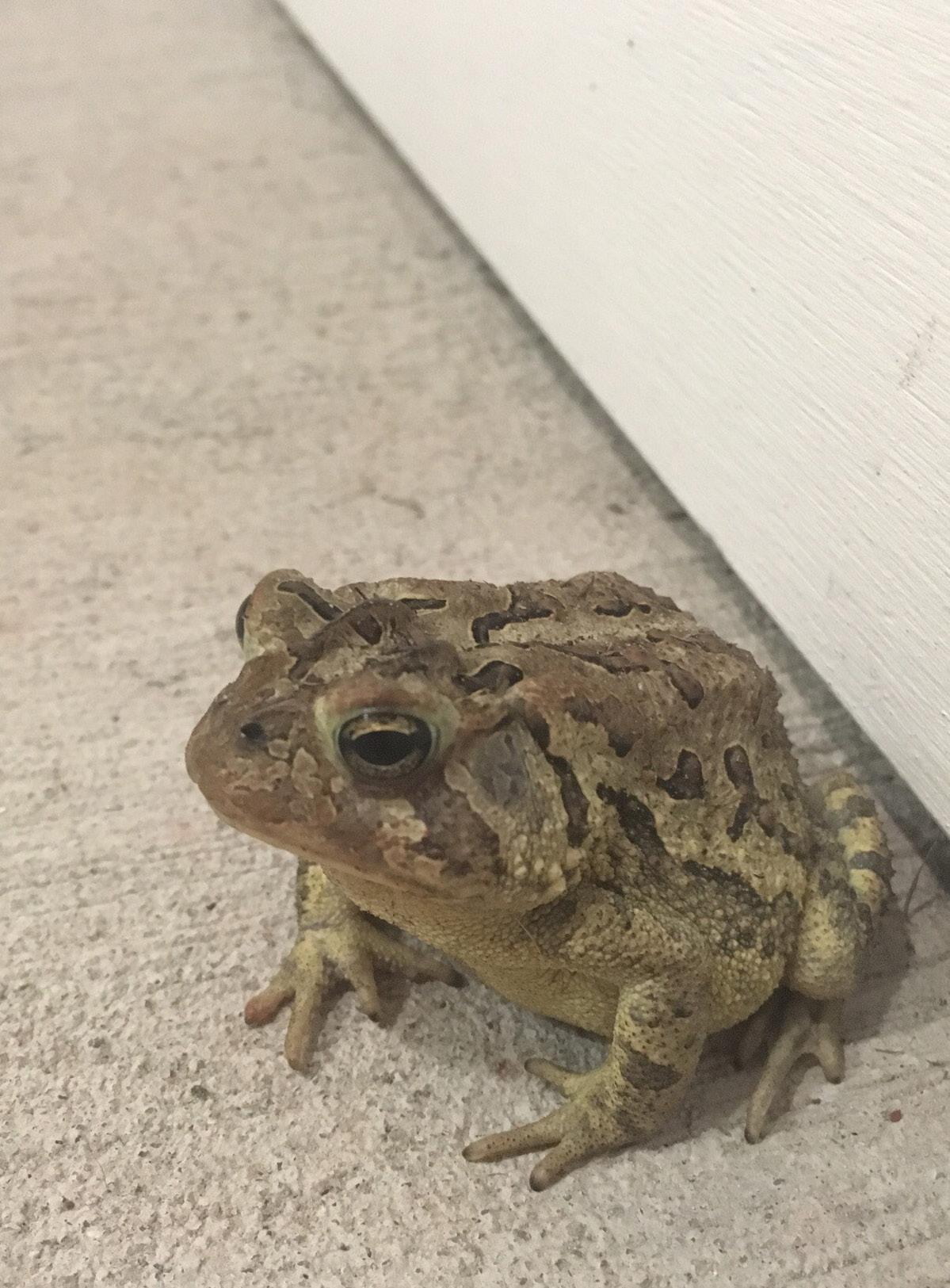




The North Carolina Aquarium at Fort Fisher presents Sea Turtle Exploration, a curriculum to help educators engage students in the fundamentals of STEAM through ready-to-use, standards-based lesson plans and sea turtles. Join us for a handson teacher workshop guiding you through our new curriculum and website.
In addition to the curriculum, you will learn about additional resources such as blog posts that will be made during the school year. Topics will include: species profiles, aquarium staff spotlights, behind-the-scenes videos, new lesson plans and more. Even follow the growth of Aquarium hatchling sea turtles by visiting the blog each week!


Aligned with the new Common Core standards, your class will be able to “adopt” a turtle and learn about its care and growth. By adopting our sea turtle, you will receive updates with information including the turtle’s current weight and length. Each class will also receive a certificate of participation.
By the end of the workshop, you will be familiar with the website and curriculum and how to implement the lessons in your own classroom. The workshop will include a behind-thescenes tour to meet one of our sea turtles. Please bring a reusable water bottle and you may choose to also pack a waste-free lunch. Our snack shop, Shark Bites will be closed but there are lunch options off-site. This workshop will count towards NC Environmental Education Certification (Criteria I) and consists of six contact
hours that may count toward CEUs for teachers.




The workshop will be held Saturday, July 14, 2018 from 9:00–3:30 at the North Carolina Aquarium at Fort Fisher.



The price of $25 includes Aquarium admission, a behind-thescenes tour, and access to the curriculum.
To register or for more information, visit https://reservations. ncaquariums.com/fortfisher/Info.aspx?EventID=20.